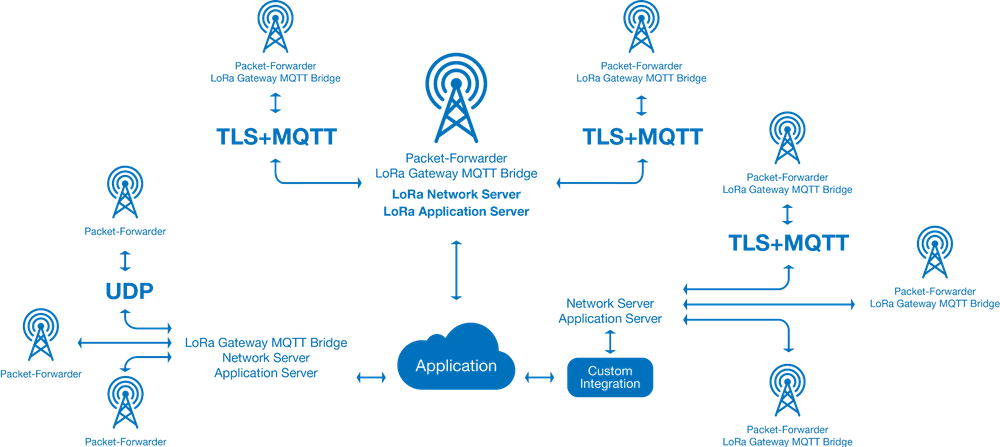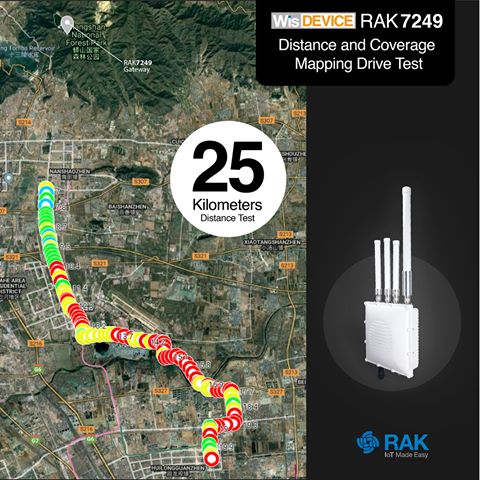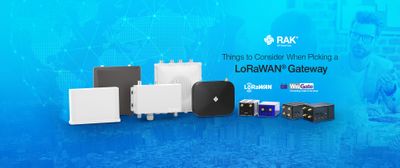How To Successfully Carry Out A LoRaWAN Coverage Test With RAKwireless
Coverage tests for LoRaWAN are very important, you might want to find out about the exact limits and boundaries of LoRaWAN. Whether as to see if it is compatible with a device that might be far from your home, be it a wristwatch that is used outside of your house, or perhaps a water or gas sensor device that is placed underground. A coverage test will help you to evaluate the range of coverage of the wide area network.
For home owners with apartments out for rent, you might also want to test out the range. RAKwireless can help you attain that goal with ease. The coverage test mainly depends on your specifications and it is done to help you find out the map or radius of your wireless network.
This test is usually carried out outdoors and it will help you to generate a heat map of the coverage of your wireless area network. A LoRaWAN device is used outdoors to help collect data and generate a heat map of the coverage of a LoRaWAN gateway placed in a particular spot.
How Is The Test Carried Out?
The coverage test for LoRa is done by installing LoRa on one or more devices within a specified location. These LoRa devices may be placed in vehicles or moving devices.
You can then use the LoRa devices to send out packets of data at short intervals, and this data is subsequently stored and is further processed. The aim of this method is to create a map of the coverage area of LoRaWAN and hence evaluate how far or the range of connection with your IoT devices.
It is very important to carry out a good coverage test, so as to be sure of the range within which a device is placed from a LoRaWAN gateway.
The LoRaWAN coverage test is essentially a user based range test, and it provides adequate information on the quality and range of LoRaWAN within a specified area.

How Do We Ensure A Quality Coverage Test?
Carrying out a coverage test is not as easy as it sounds, it may be a bit difficult especially if you do not know how to go about it and have no experience with testing coverage of wide area networks.
Many factors could hinder a successful test, since LoRaWAN is based on radio frequencies, a lot of factors could interfere with the results and you may end up with a not-so accurate outcome.
Factor 1
The weather conditions of the area you are covering may differ at certain periods and hence this would result in a difference in results, so if proper evaluation is not done, one may end up with a wrong test result.
Factor 2
City traffic can also cause some fluctuations in the result, one might generate a good signal within the house environment, but when distance starts to come in, cars and trucks may affect radio frequencies.
This factors may be unavoidable and that is the reason we have decided to give a few tips on how a successful wide area network coverage test can be carried out with LoRaWAN.
Carrying Out the Test
Step 1: Evaluate the area you want to cover
One of the best tips to getting a good result would be to carry out your test within a smaller range of area, about 400m is still good enough if you are trying it out for the first time.
Step 2: Carry out the test for an extended period
In order to ensure that factors like weather or a truck parked close to your house is not interfering with your coverage test, it is important that this test is carried over a long period of time.
Extending the period for coverage tests will help one to take into consideration other things that may affect the frequencies of the wide area network. If you are looking to test the reception of your IoT device sensor to a/multiple LoRaWAN gateway(s) in a specific place, then it is important to do a coverage test over a period of time.
Step 3: Place your gateway high enough
This is a rather obvious one, for anyone that has dealt with radio frequencies, they would know that, the higher the altitude, the better the coverage.
In order to achieve a better coverage with LoRaWAN, the height of the gateway antenna must be decent enough, especially in urban areas and cities where there is a lot of other parameters and factors that may influence your test results.
Coverage improves with increased height and it will be a very good idea to place the antenna at a very good spot that's high enough.
Step 4: Place value on each of your results
The result for each test may differ and it is important that one notes the differences in these results. This is because as earlier stated, different factors and attenuations may come into place and affect the results at different times.
Hence it is important that we take note of the difference in the results at certain points or places, be it a different weather condition, or the presence of new LoRaWAN gateways in the area.
Step 5: Classify Data Collected Properly
If you are carrying out a big and important test, one will definitely end up with a lot of data, especially with movements around in order to evaluate coverage within that area.
For this reason, it is important to properly classify each data for the LoRaWAN coverage test in a way that would be easy to understand. The network would be tested at various locations and we will definitely need to have various classifications for every of the data gotten at these various points.

Some of the classifications will include;
• Location
• Altitude
• Area
• Weather at each point in time.
Try it Yourself
A shabby LoRaWAN gateway coverage test will do no good in helping you to establish the coverage of your wide area network, this is why it is important that the test is properly carried out and evaluated in the right way.
Although a lot of factors may hinder a quality and successful coverage test, following the tips above will help to inform you more about the coverage of LoRaWAN.





